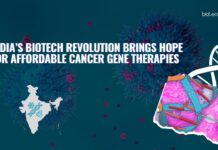Seafood & Colistin Resistance – Hidden Antibiotic Crisis Uncovered
Imagine your loved one is fighting a deadly infection. The last hope is?
Colistin, a powerful antibiotic used only when all others fail. But this final line of defense is starting to fail, as bacteria have developed resistance worldwide.
>Scientists have discovered that imported seafood, including shrimp and scallops, may be spreading antibiotic resistance by carrying bacteria that weaken one of modern medicine’s last weapons.
Groundbreaking Study Reveals New Risk
A team of researchers at the University of Georgia, led by microbiologist Dr. Issmat Kassem, made a significant discovery that sheds light on how Colistin resistance genes are moving across borders. Their study has identified bacteria carrying colistin-resistance genes in imported shrimp and scallops sold at food markets in and around Atlanta, Georgia.
The seafood was purchased from eight different markets as part of the study. Which was presented at ASM Microbe 2025, the largest annual meeting of the American Society for Microbiology, held in Los Angeles. The full research report will be published in the journal mSphere.
The Role of Imported Seafood in Antimicrobial Resistance
Seafood is common in many American diets, and most of it, including about 90% of the shrimp consumed in the United States, is imported from other countries.
While imported seafood is tested for contaminants for harmful bacteria or chemical residues, current screening procedures rarely check the presence of Antimicrobial Resistance Genes. As a result, bacteria carrying genes, enabling resistance to critical antibiotics can slip through the detection system.
Plasmids: The Key to the Spread
The research found that the Colistin-Resistant gene was carried on plasmids, small, circular pieces of DNA (Deoxyribonucleic acid ) that are separate from the main bacterial chromosome. What makes plasmids especially concerning is their ability to transfer between different types of bacteria. This means that resistance can spread not just from parent to offspring but also between different species through a process called Horizontal Gene Transfer.
This ability makes plasmids a powerful driver in the rapid spread of Antimicrobial Resistance, turning isolated cases into widespread threats.
Colistin: A Double-Edged Sword
First introduced in the 1950s, colistin was used to treat serious infections caused by Gram-negative bacteria. However, the drug’s toxic side effects, which include risks of Nerve and Kidney damage, led to its withdrawal from use in the United States in the 1980s.
In recent years, as resistance to other Antibiotics has grown alarmingly common, Colistin was reintroduced as one of the few remaining options for treating certain severe infections. Today, the World Health Organization (WHO) categorizes Colistin as a critically important antibiotic, highlighting its vital role in human medicine.
The Rise of Mobile Resistance Genes
Until 2016, scientists believed colistin resistance rose only through genetic changes passed down through bacterial reproduction. That changed with the discovery of mobile colistin resistance (mcr) genes. These genes, carried on plasmids, can spread between bacteria, even across different species, via lateral or horizontal gene transfer.
Since then, researchers have identified at least 10 different types of mcr genes and numerous variations, signaling just how adaptable and widespread this form of resistance has become.
Global Food Trade: A Vehicle for Resistance
Dr. Kassem points out that today’s food supply is truly global. “If you go out for a meal today, the ingredients on your plate might come from number of different countries,” he explained. Some of these countries have weaker regulations when it comes to the use of antibiotics in agriculture.
The lack of oversight means that resistant bacteria or the genes that enable resistance, can hitch a ride into new regions through imported food. Kassem and his team suspected that imported food products could be key pathways for the spread.
Previous Findings Set the Stage
The team’s earlier work had already detected mcr genes in wastewater samples collected in Georgia. They also identified the bacterial species carrying plasmids with these resistance genes. The bacteria are not typically targeted in routine food safety checks.
Now, their latest research has uncovered the same bacterial hosts, plasmids, and the resistance genes in imported shrimp and scallops. The good news? Their tests found no trace of Colistin resistance genes in local seafoods, suggesting that domestic seafood production in the U.S. has not contributed to the problem so far.
The Broader Threat
While this study highlights imported seafood as a route for Colistin resistance to spread, it might not be the only one. “We live in a very connected world,” said Kassem. “People travel, food travels, goods travel. And with them, so do bacteria — including those carrying dangerous resistance genes.”
This interrelatedness makes it easier for antimicrobial resistance to cross borders and continents. Once resistance emerges somewhere, it can quickly become a problem everywhere.
The Need for Action
Kassem emphasized that tackling antimicrobial resistance requires a coordinated global response. He called for:
- Stronger monitoring systems to detect resistance genes in imported foods.
- More comprehensive food safety inspections that include checks for antimicrobial resistance.
- Greater international cooperation to ensure consistent standards and controls on the use of antibiotics in agriculture.
“We need to invest in surveillance, expand monitoring programs, and work together at a global level to prevent it from spreading further,” Kassem urged.
The research of Colistin-resistance genes in imported seafood is a wake-up call for the food industry, public health officials, and consumers. With Bacteria gaining new ways to evade, even our most powerful antibiotics is taking time to act.
Stronger safeguards, smarter policies, as well as global partnerships will be essential in keep these drugs effective for future generations.























